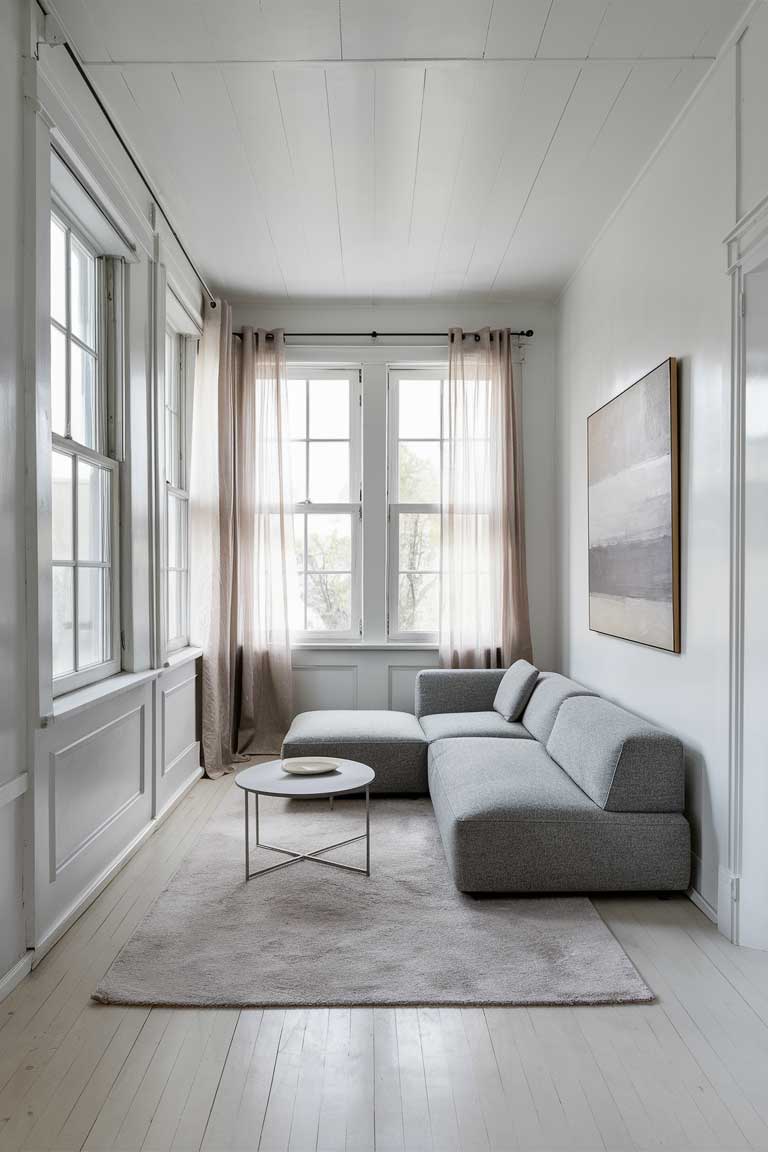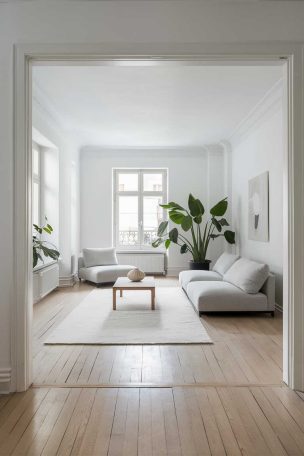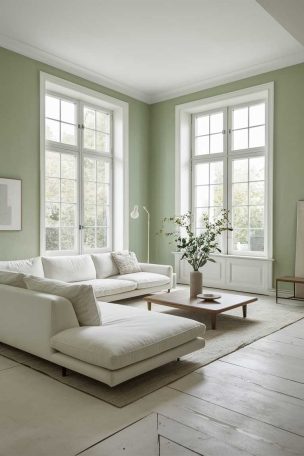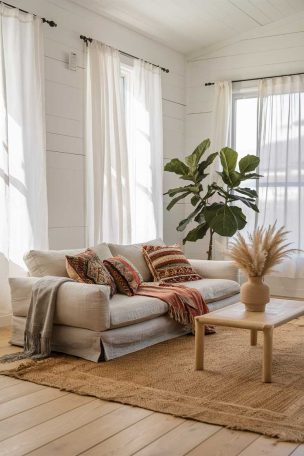In today’s urban landscape, where space is at a premium, the art of creating a minimalist living room in a small area has become increasingly valuable. This approach not only maximizes the functionality of your space but also cultivates a sense of calm and order that can be truly transformative.
Let’s explore how you can turn your compact living room into a minimalist haven that feels both spacious and inviting.
The Foundations of Minimalist Design
Before we delve into specific ideas, it’s crucial to understand the core principles of minimalist design. At its heart, minimalism is about intentionality – choosing quality over quantity and focusing on what truly matters.
Embracing a Neutral Color Palette
One of the first steps in creating a minimalist small living room is to adopt a neutral color palette. This doesn’t mean your space has to be stark or boring – far from it!
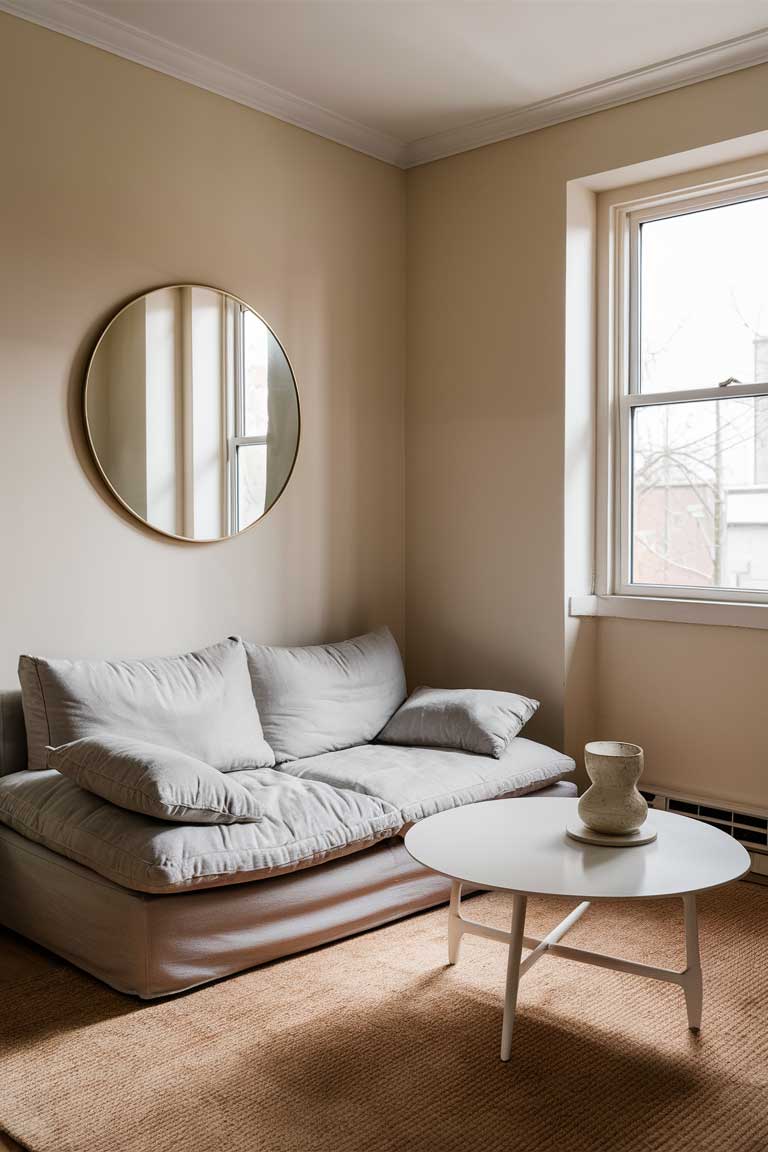
By sticking to a palette of whites, beiges, and light grays, you’re creating a clean canvas that makes your space feel larger and more open. This approach allows key pieces to stand out and gives your eyes a place to rest, reducing visual clutter.
But don’t worry – this doesn’t mean you can’t have any color at all. The key is to use color strategically. Try adding pops of color through small accessories like throw pillows, a vase, or artwork. These touches of color will feel more impactful against the neutral backdrop and can be easily changed to refresh your space.
Maximizing Natural Light
Natural light is your best friend when it comes to making a small space feel larger and more inviting. If you’re lucky enough to have large windows, make the most of them!
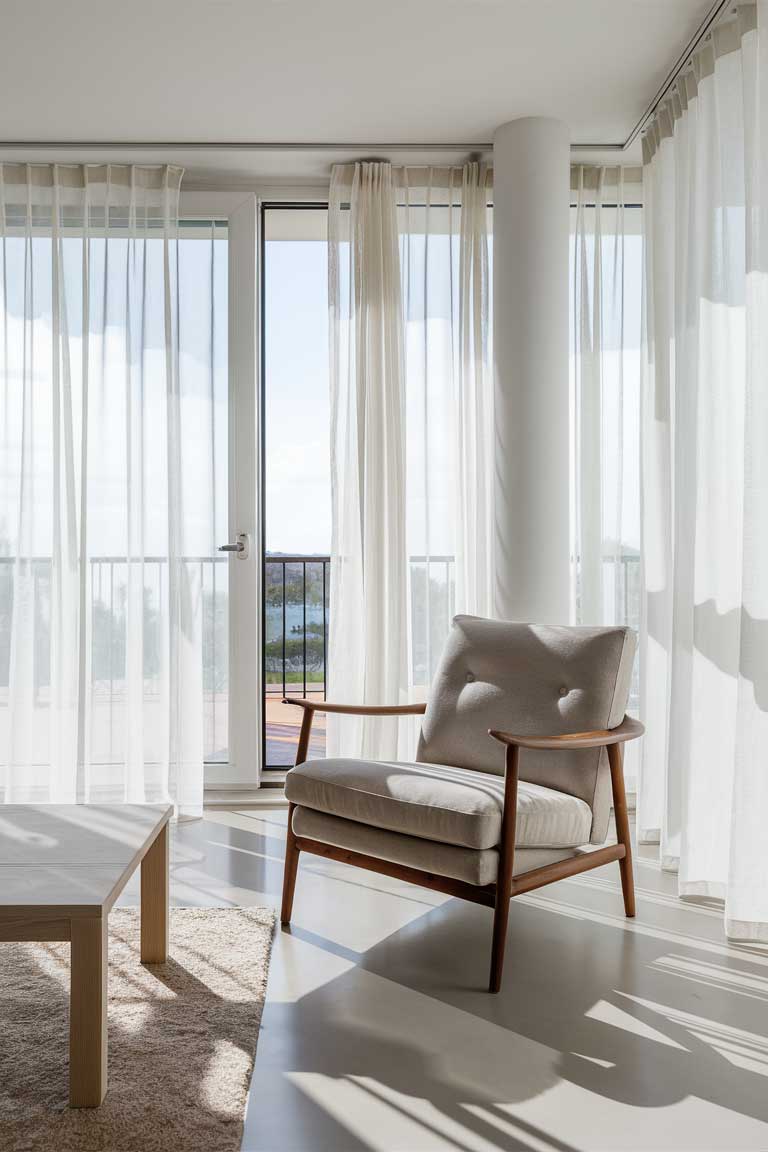
Opt for sheer curtains or blinds that allow light to filter through even when closed. This not only brightens up your space but also connects your interior with the outside world, making your room feel less confined.
If natural light is limited, don’t despair. Strategically placed mirrors can work wonders in reflecting and amplifying whatever light you do have. A large mirror opposite a window can virtually double the amount of natural light in your room.
Space-Saving Furniture Solutions
When working with a small space, every piece of furniture needs to earn its keep. This is where multi-functional and compact furniture comes into play.
Multi-Functional Pieces
In a minimalist small living room, versatility is key. Look for furniture that can serve multiple purposes to maximize your space efficiency.
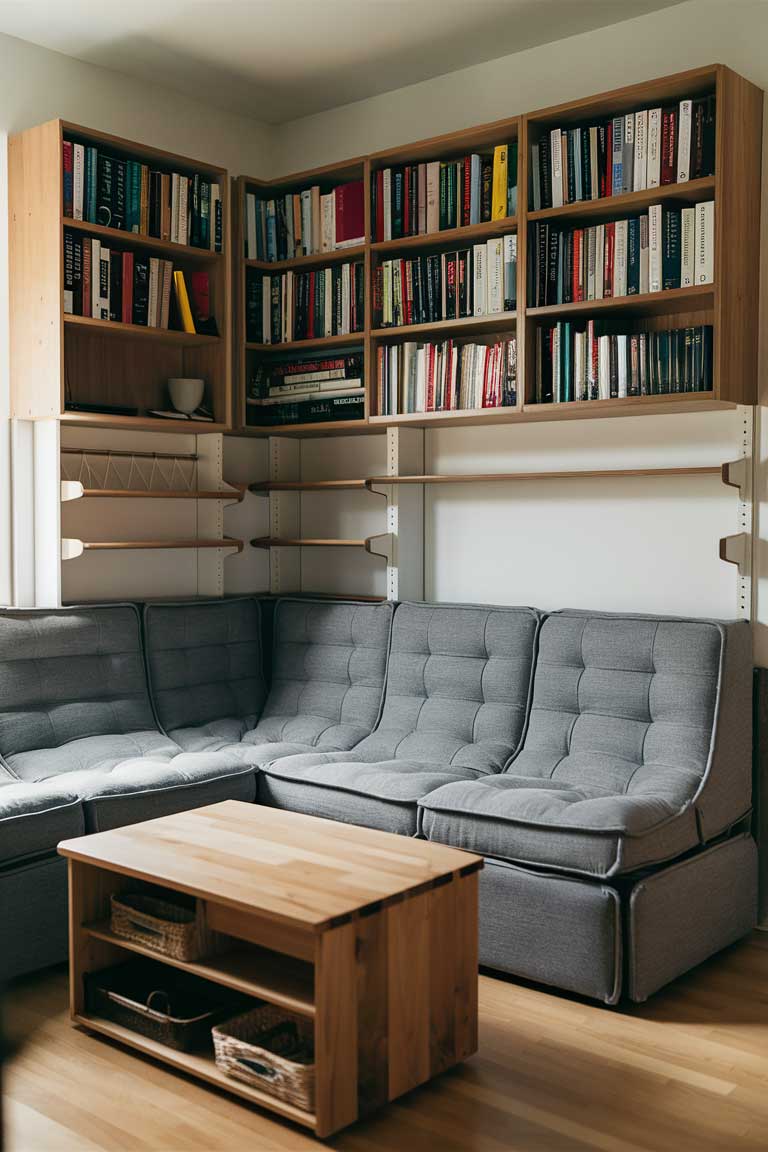
Consider a sofa bed for those times when you need to accommodate overnight guests. Nesting tables can provide extra surface area when needed and be tucked away when not in use. An ottoman with hidden storage can serve as a footrest, extra seating, and a place to stow away blankets or magazines.
These multi-functional pieces allow you to have all the amenities of a larger living room without sacrificing precious floor space.
Low-Profile and Compact Furniture
When choosing furniture for a small minimalist living room, pay attention to each piece’s profile. Low-profile furniture can help create the illusion of higher ceilings and more space.
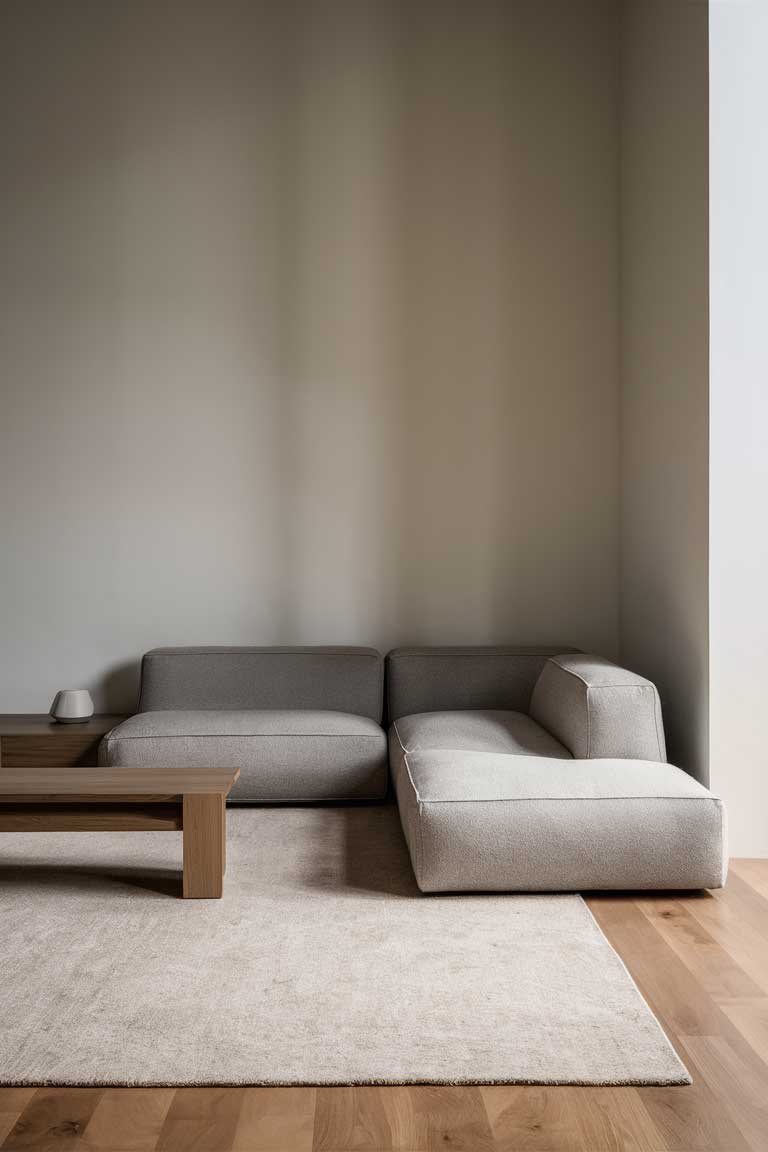
Look for sofas and chairs with thin legs that allow you to see more of the floor – this visual continuity can make your space feel larger. Similarly, choose coffee tables and side tables with slim profiles to maintain an open feel.
Remember, in a minimalist space, less truly is more. Instead of trying to fit a full-size sofa, loveseat, and armchair, opt for a compact sectional or a loveseat paired with a statement armchair. This approach gives you the seating you need without overwhelming your space.
Clever Storage Solutions
In a small space, smart storage is essential to maintain a clutter-free, minimalist aesthetic. The key is to maximize every inch of available space without making your room feel cramped.
Built-In Storage Options
Built-in storage is a fantastic way to make the most of your space while maintaining a sleek, minimalist look.
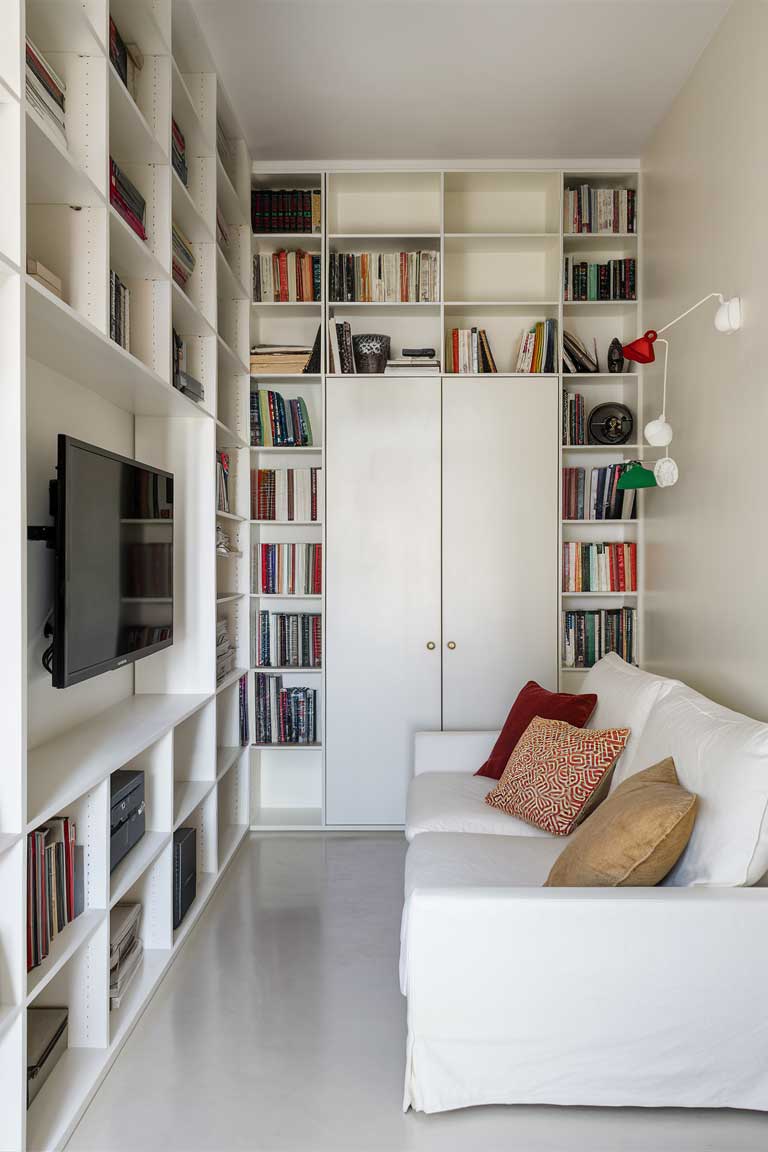
Consider installing floor-to-ceiling shelving units or bookcases. These not only provide ample storage but also draw the eye upward, making your ceiling appear higher. If possible, opt for built-in units that are the same color as your walls – this creates a seamless look that doesn’t interrupt the visual flow of your space.
Remember often-overlooked spaces like the area under a window. A built-in window seat with hidden storage can provide both a cozy reading nook and a place to store items out of sight.
Hidden and Multifunctional Storage
The best storage solutions in a minimalist space are often the ones you can’t see.
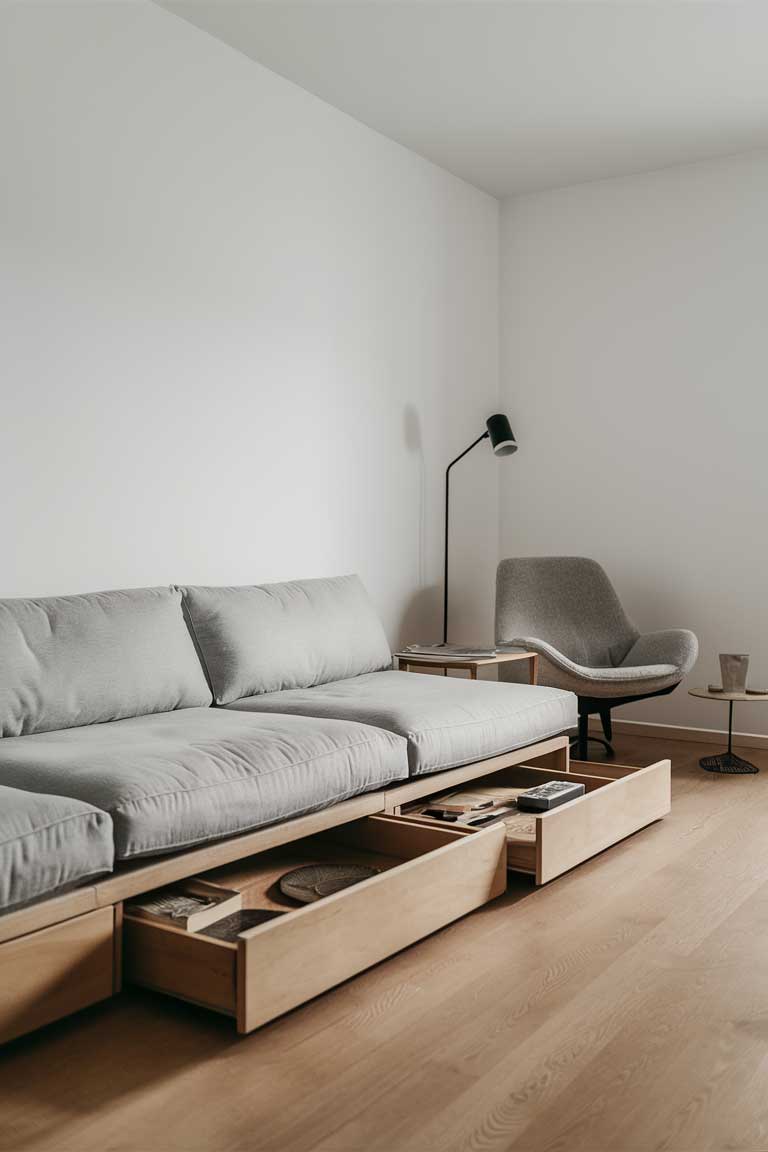
Look for furniture pieces with hidden storage compartments. A platform bed with drawers underneath, a coffee table with a lift-top that reveals storage space, or a side table with a cabinet can all help you keep your space tidy without adding visual clutter.
Don’t underestimate the power of vertical space, either. Wall-mounted shelves or a tall, narrow bookcase can provide plenty of storage without taking up much floor space. Just be sure not to overcrowd these spaces – remember, in minimalist design, negative space is just as important as the objects you choose to display.
Creating Visual Interest in a Minimalist Space
While minimalism is about simplicity, that doesn’t mean your space has to be boring. The key is to create visual interest through carefully chosen elements that complement rather than compete with each other.
Focal Points and Statement Pieces
In a minimalist room, less is more, which means the pieces you do choose carry more weight. A well-chosen focal point can anchor your room and give it personality without cluttering the space.
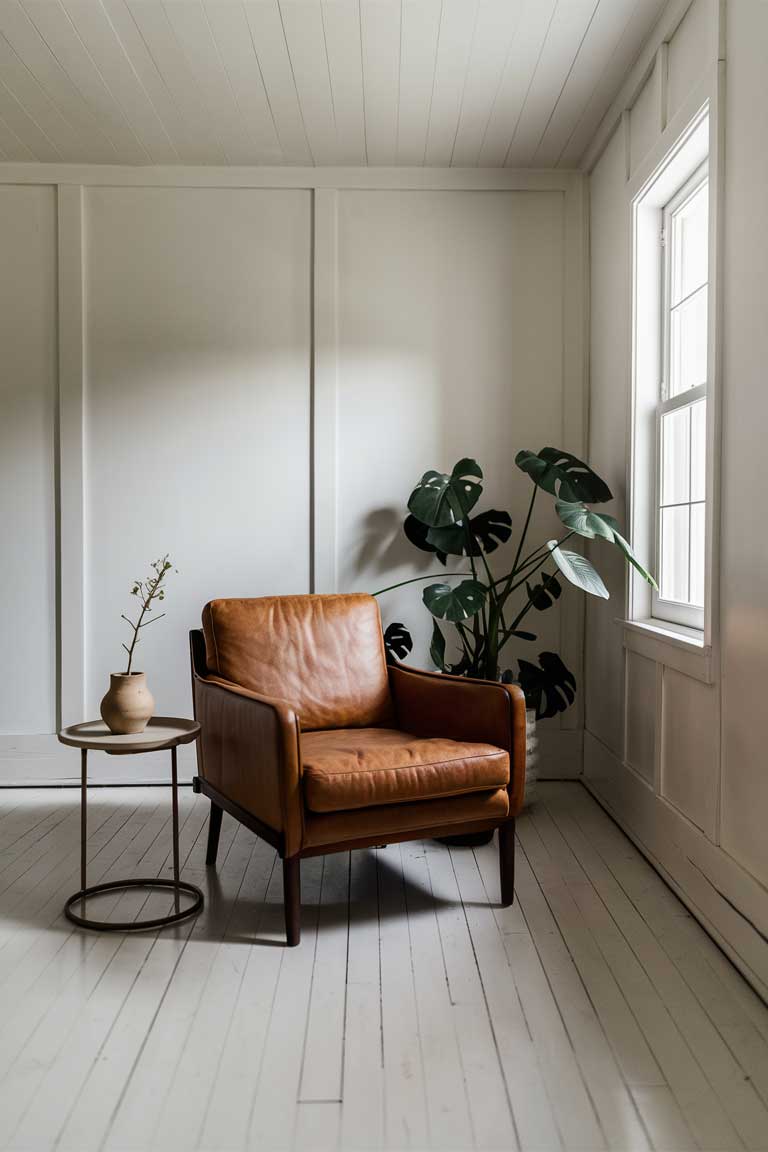
This could be a striking piece of artwork, an interesting light fixture, or a uniquely designed chair. The key is to let this piece shine by keeping the rest of your decor simple and complementary.
Remember, in a minimalist space, even functional items can serve as statement pieces. A beautifully designed floor lamp or a sleek, modern bookshelf can be both practical and visually appealing.
Texture and Material Variety
While a minimalist color palette tends to be neutral, you can add depth and interest to your space through a variety of textures and materials.
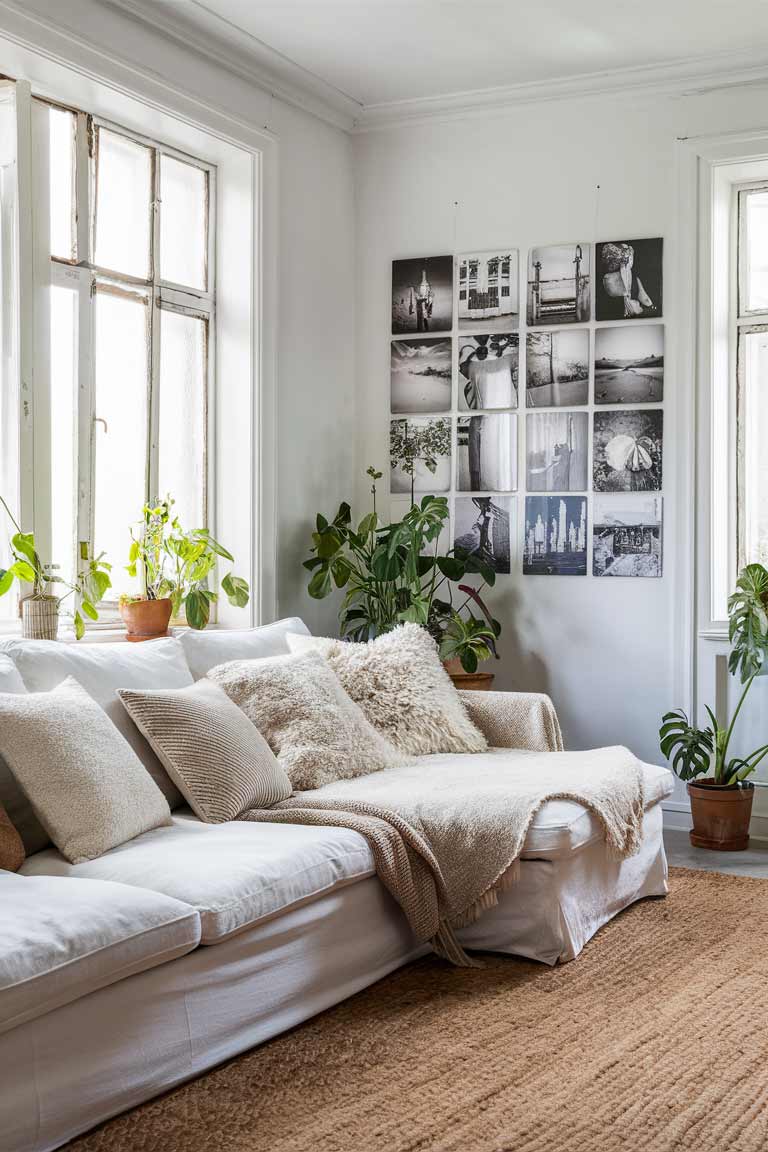
Mix and match different materials, such as wood, metal, glass, and textiles, to create a rich, layered look. A sleek leather sofa can be softened with a chunky knit throw, and a smooth wooden coffee table can be contrasted with a textured area rug.
Don’t forget about wall textures, either. An accent wall with exposed brick or textured wallpaper can add depth to your space without overwhelming it.
Layout Strategies for Small Spaces
The way you arrange your furniture can have a big impact on how spacious your room feels. In a small space, every inch counts, so it’s important to plan your layout carefully.
Open Floor Plans
An open layout can make a small space feel much larger and more inviting.
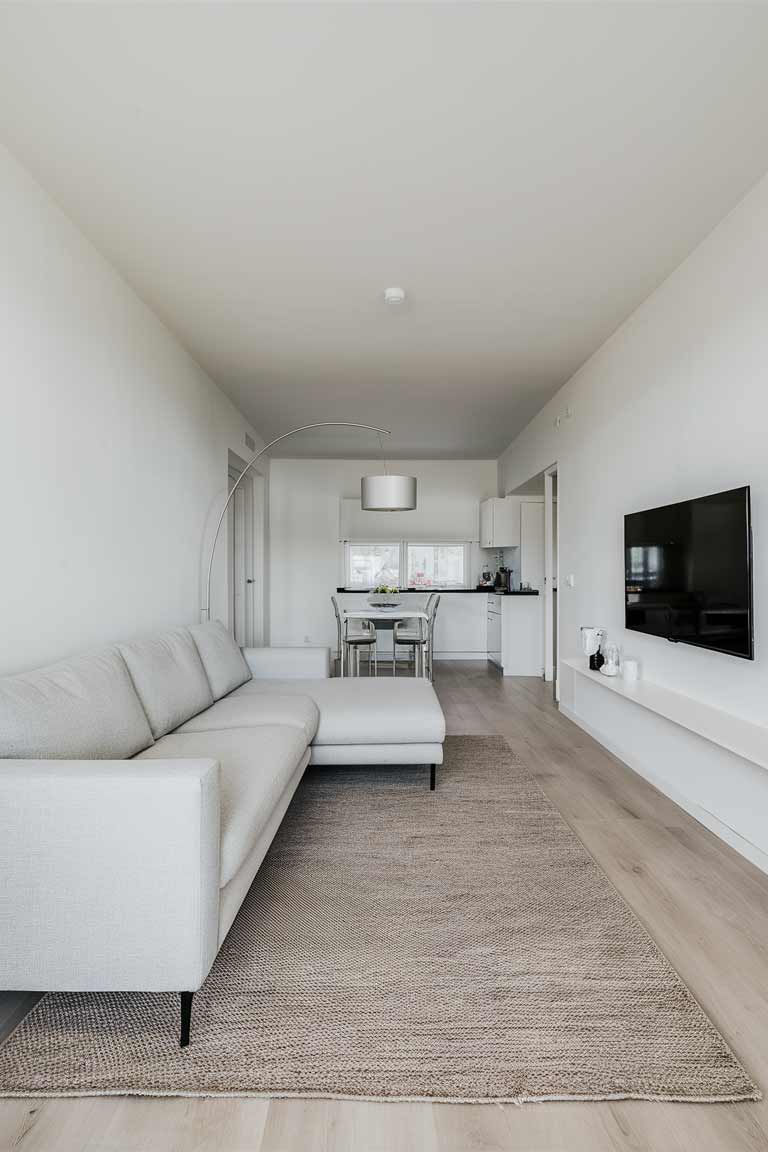
Try to create clear pathways through your room. Avoid blocking windows or doorways with furniture, as this can make your space feel cramped. Instead, arrange your furniture to create a natural flow through the room.
If your living room needs to serve multiple functions, use area rugs or strategic furniture placement to create distinct zones within the space. For example, a rug can delineate the seating area. At the same time, a console table behind the sofa can create a subtle division between the living area and a workspace or dining area.
Vertical Space Utilization
When floor space is at a premium, it’s time to think vertically.
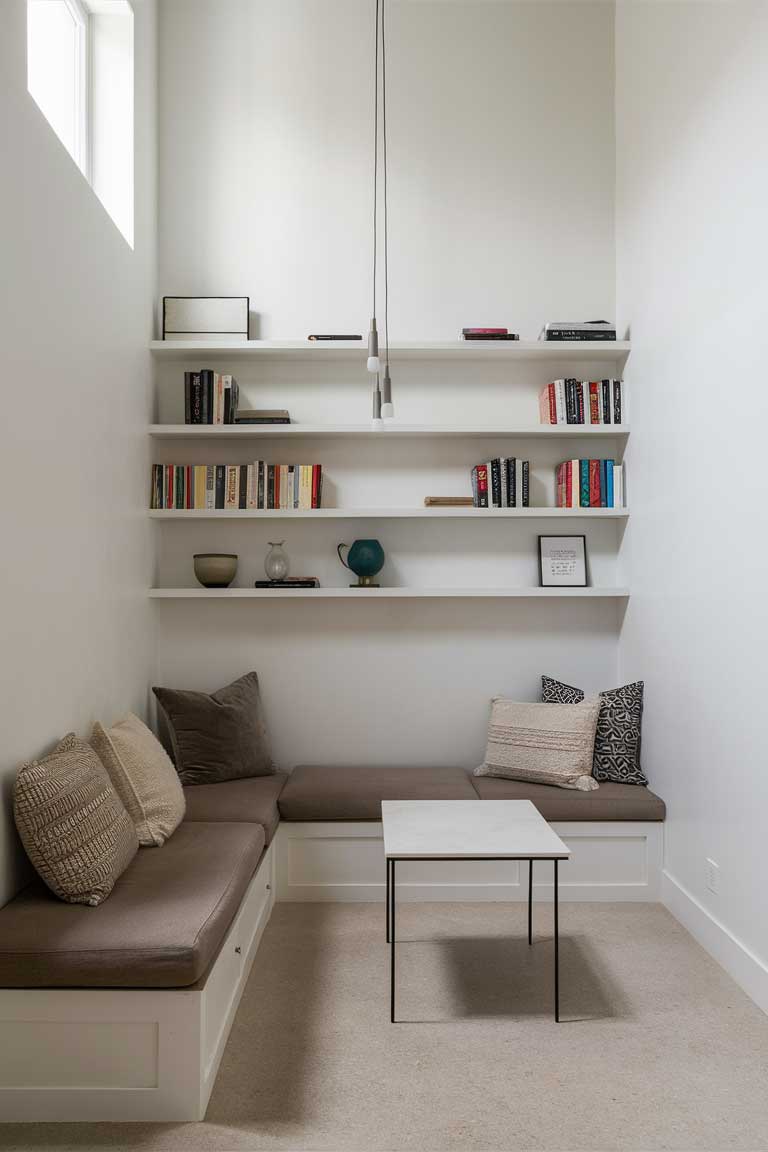
Use tall bookshelves or floor-to-ceiling curtains to draw the eye upward and create the illusion of height. Wall-mounted TVs and floating shelves can free up floor space while adding functionality.
Remember the space above doors and windows—these often overlooked areas can be perfect for additional storage or display space.
Minimalist Decor and Accessories
In a minimalist space, every item should have a purpose – whether functional or aesthetic. The key is to be intentional about what you choose to display.
Curated Wall Art
Wall art can add personality to your space without taking up valuable floor real estate.
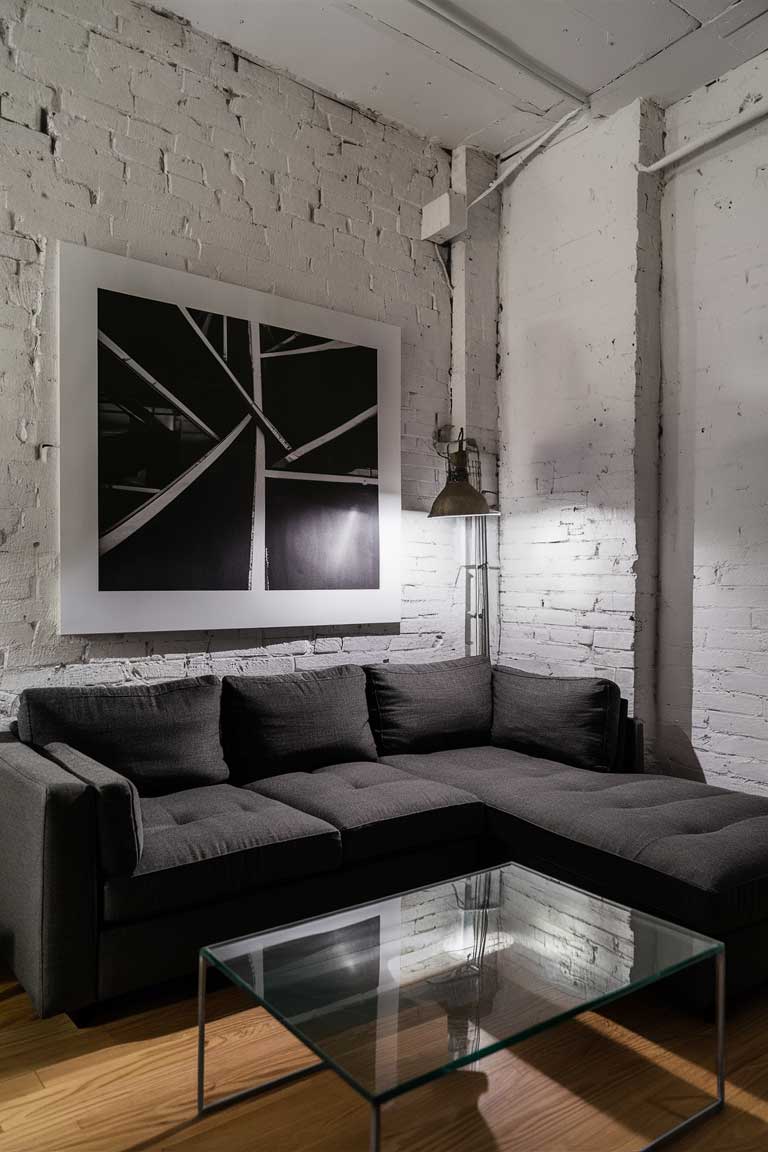
Choose pieces that complement your minimalist aesthetic. Large-scale art can make a big impact without cluttering your walls. Alternatively, a carefully arranged gallery wall can add interest while maintaining a cohesive look.
Remember, negative space is important in minimalist design. Don’t feel the need to fill every wall – sometimes, a single striking piece can be more effective than multiple smaller ones.
Plants and Natural Elements
Bringing a touch of nature into your space can soften the sometimes stark lines of minimalist design.
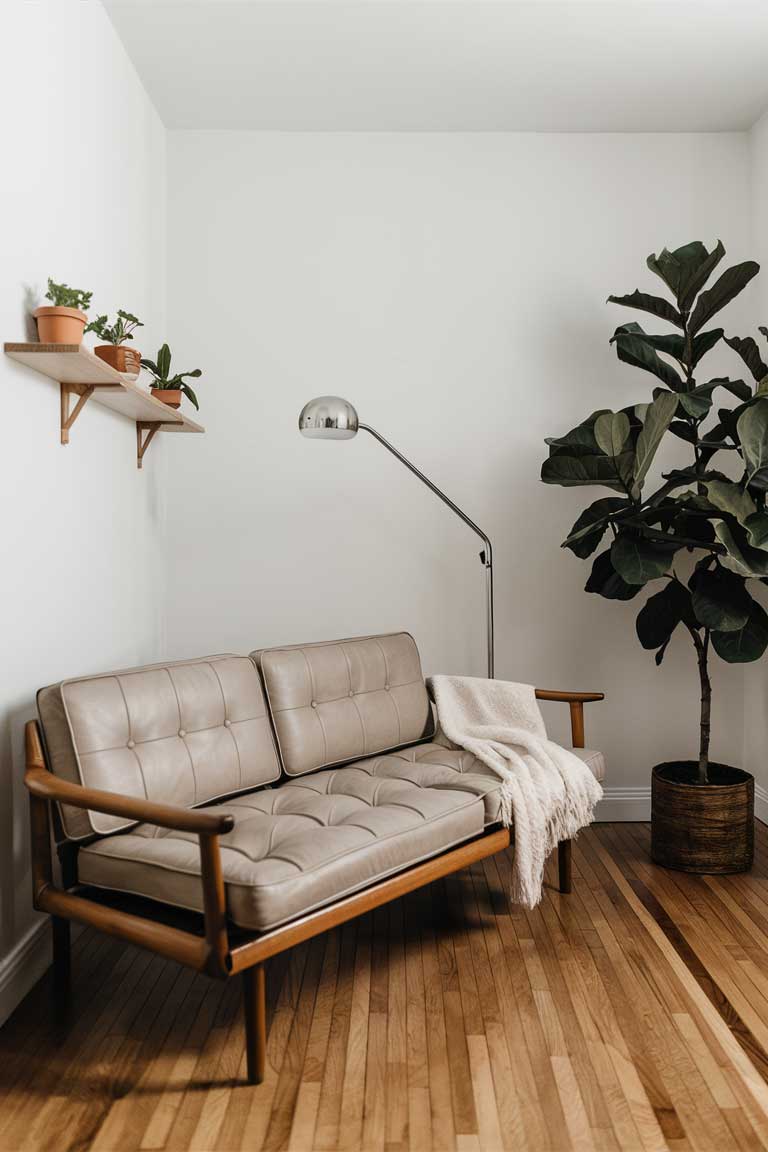
Choose plants that thrive in your specific light conditions. A large statement plant, like a fiddle leaf fig, can serve as a focal point, while smaller plants can add life to shelves or side tables.
If you’re not confident in your green thumb, consider low-maintenance options like succulents or air plants. Even a single stem in a simple vase can add a refreshing touch of nature to your space.
Lighting in Minimalist Small Living Rooms
Lighting plays a crucial role in any interior design scheme, but it’s particularly important in small, minimalist spaces. The right lighting can make your room feel larger, more inviting, and more functional.
Streamlined Lighting Fixtures
In keeping with the minimalist aesthetic, look for lighting fixtures with clean lines and simple designs.
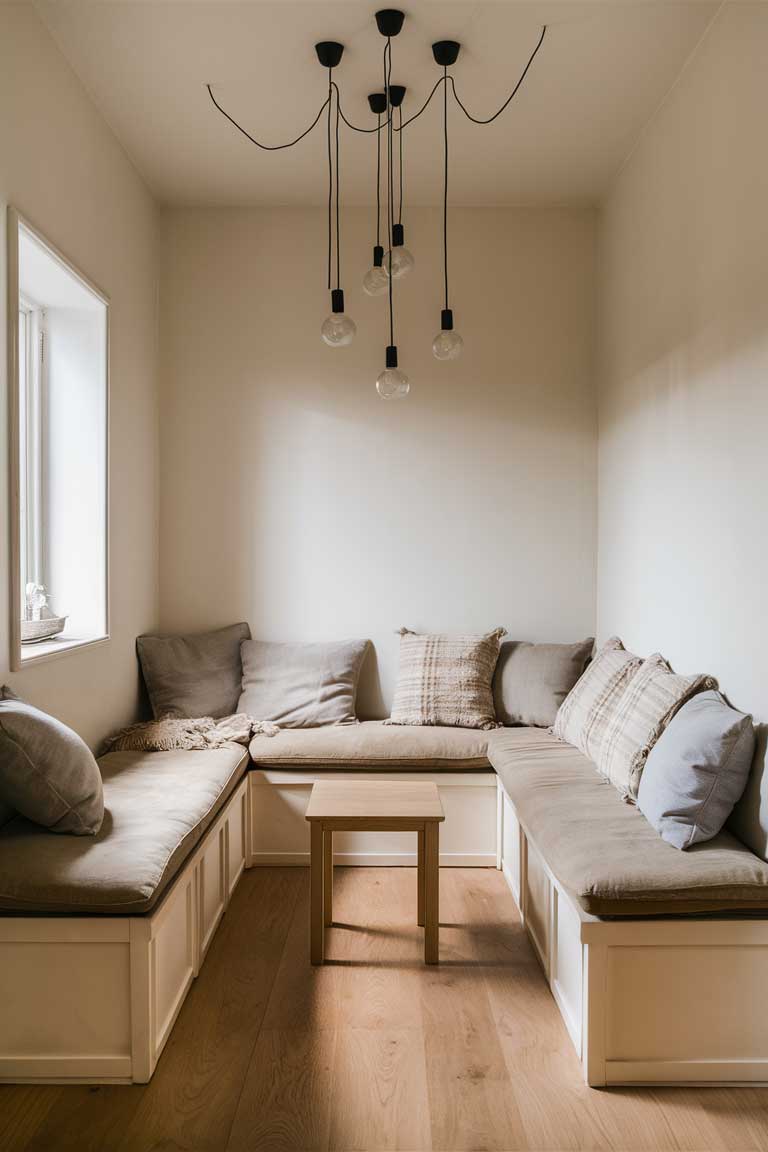
Pendant lights with simple geometric shapes can add interest without overwhelming your space. Wall sconces can provide ambient lighting without taking up floor or table space.
Remember, the fixture itself can be a design element. A statement chandelier or an architecturally interesting floor lamp can serve as a focal point in your room.
Layered Lighting for Ambiance
To create a warm and inviting atmosphere, it’s important to have multiple sources of light at different levels.
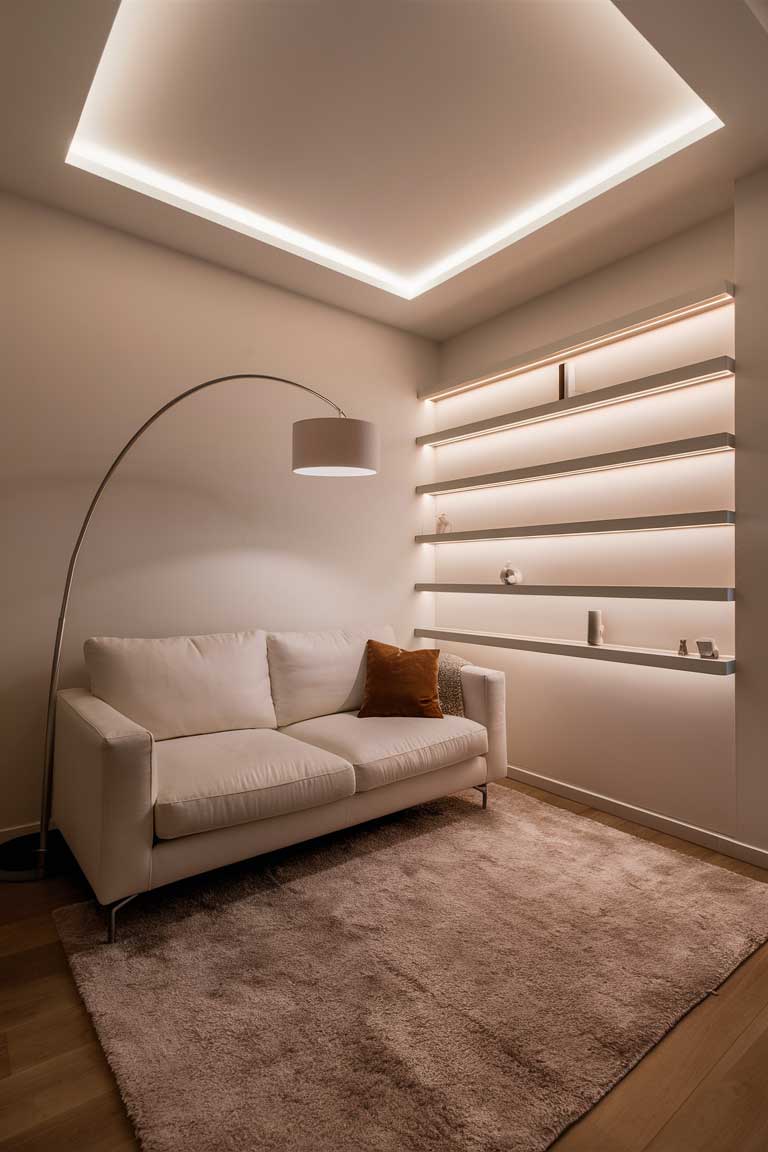
Start with ambient lighting to provide overall illumination – this could be recessed lighting, a central ceiling fixture, or a combination of both. Add task lighting, like a floor lamp next to a reading chair or a table lamp on a side table, for specific activities.
Finally, accent lighting should be considered to highlight artwork or architectural features. This could be in the form of picture lights, wall washers, or even LED strip lighting under shelves or cabinets.
By combining these different types of lighting, you can create a layered, flexible lighting scheme that adapts to different moods and activities throughout the day.
Conclusion: Embracing Minimalism in Small Living Rooms
Creating a minimalist living room in a small space is about more than just decluttering – it’s about thoughtfully curating your space to reflect your lifestyle and values. By embracing a neutral color palette, choosing multi-functional furniture, implementing clever storage solutions, and paying attention to layout and lighting, you can create a space that feels open, serene, and uniquely yours.
Remember, minimalism doesn’t mean sacrificing comfort or personality. It’s about being intentional with your choices and focusing on what truly matters to you. With these ideas as a starting point, you can transform your small living room into a minimalist oasis that feels spacious, functional, and beautifully you.

